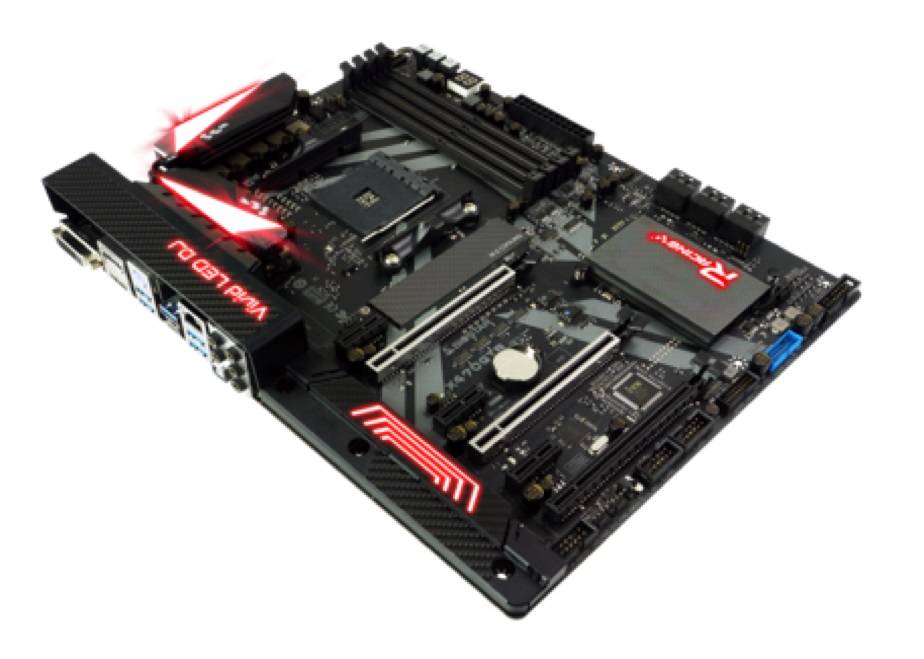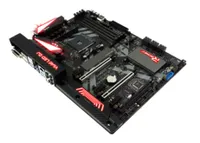Biostar Brings Two New Motherboards To The AMD X470 Party
Biostar launched the X470GT8 and X470GTN motherboards to pair with AMD’s 2nd-gen Ryzen processors. The GT8 is an ATX motherboard competing in the enthusiast gaming market, whereas the GTN is an ITX motherboard for the mid range of the small-form-factor market.
Unlike its competitors, Biostar brought only two motherboards to the Ryzen Pinnacle Ridge launch. Starting with the larger of the two, the X470GT8 has all the usuals, including two reinforced PCIe 3.0 x16 slots, four DIMM slots, six SATA 3.0 ports, and ALC1220-powered audio. Most competing motherboards have two PCIe M.2 slots, but the GT8 has only one, which is tucked behind a dedicated heatsink.
Aesthetically, the GT8 looks similar to Biostar’s other flagship motherboards. It adopts an RGB-lit rear I/O shroud and RGB-lit heatsinks. Biostar hasn’t migrated to digital-RGB lighting yet, so the board features just four-pin 12V RGB headers. The GT8 includes a general selection of ports on the rear I/O, including three video outputs (DVI-D, HDMI, and DisplayPort), USB 3.1 Gen2 type-A and type-C ports, and gigabit Ethernet provided by an Intel controller.
The GTN adopts a similar layout to other X470 ITX motherboards we’ve seen. In addition to the standard configuration of two DIMM slots and one PCIe 3.0 x16 slot, the GTN has the usual four SATA 3.0 ports and a rear I/O layout that’s nearly identical to the larger GT8. The GTN only loses a DisplayPort. Usually, motherboard manufacturers place secondary, slower M.2 slots of the back of the board only, but the Biostar GTN’s only M.2 slot is on the back. Although the slot has the full speed of a PCIe 3.0 x4 connection, a fast SSD located here stands a chance of being throttled due to overheating. Unlike the GT8, the GTN’s networking is powered by Realtek, and the audio uses an ACL892 codec.
Biostar didn’t announce pricing and availability for the X470GT8 and GTN.
Get Tom's Hardware's best news and in-depth reviews, straight to your inbox.
-
kinney Not kidding about the overheating on the rear M.2, I have the X370GTN and a 960 Pro 1TB, gets hot pretty quick. It's all that was available at the time. Will probably replace my board & CPU with Zen2 next year. That allows me the opportunity to go for Intel's chips with Spectre/Meltdown fixes in hardware as well.Reply -
kinney Yeah, front mounted M.2 with a heatsink is the way to go. Gets some airflow & a place for the heat to go if there isn't much.Reply

